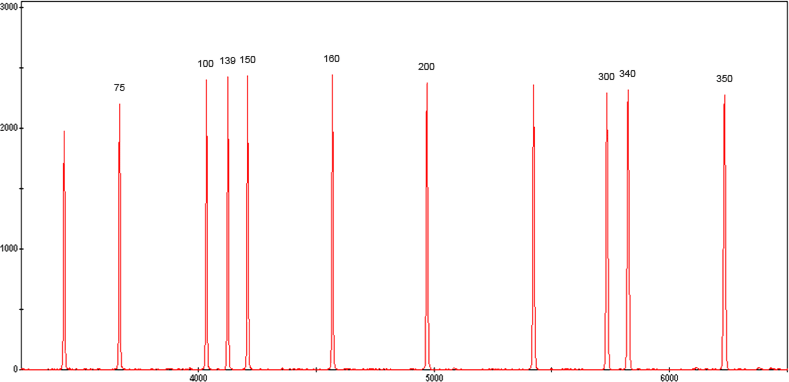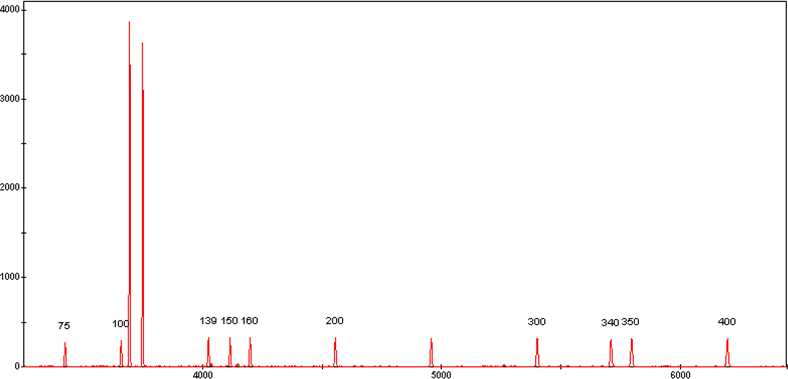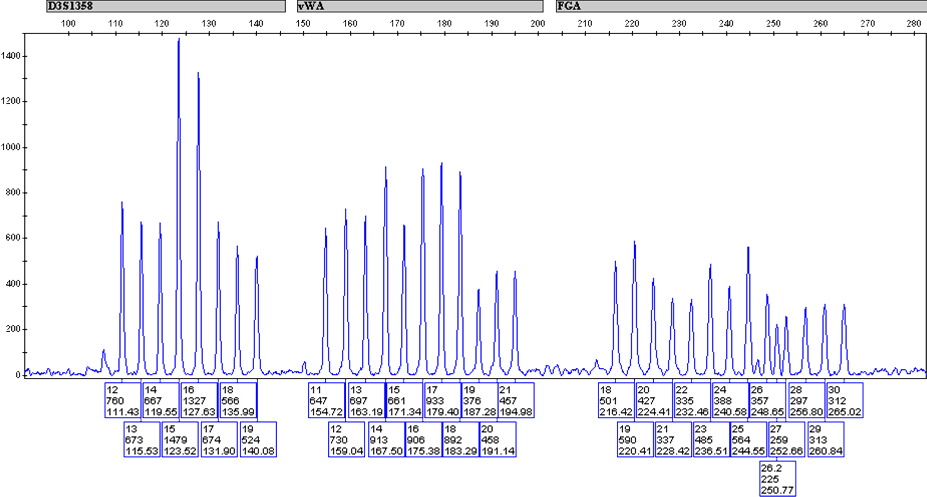Archival Notice
This is an archive page that is no longer being updated. It may contain outdated information and links may no longer function as originally intended.
Home | Glossary | Resources | Help | Contact Us | Course Map
Commercial kits for short tandem repeats (STR) typing include allelic ladders and internal size standards (ISS) that are added to each sample.
Read more about Capillary Electrophoresis in course: Amplified DNA Product Separation.
Each sample from a run or gel should be assessed to determine if the ISS peaks have been called correctly. In general, the peaks or bands from an ISS are uniform in size or intensity. Lack of uniformity or miscalled peaks can indicate problems with the sample, injection, and/or run.
The ISS is particularly useful in determining the precision of a capillary electrophoresis run. For example, using Applied Biosystems software, the 250 peak is not assigned in the ISS and the size of this peak (in each sample) can be used to determine the in-run precision. Temperature fluctuations can cause the in-run precision to exceed 1 base pair and evaluation of the ISS can assist analysts in identifying this issue.
- Allelic ladders should be assessed to ensure that all peaks have been called correctly. Ladder peaks that have not been called or have been miscalled can indicate a problem with the ladder sample, injection, and/or run.
Additional Online Courses
- What Every First Responding Officer Should Know About DNA Evidence
- Collecting DNA Evidence at Property Crime Scenes
- DNA – A Prosecutor’s Practice Notebook
- Crime Scene and DNA Basics
- Laboratory Safety Programs
- DNA Amplification
- Population Genetics and Statistics
- Non-STR DNA Markers: SNPs, Y-STRs, LCN and mtDNA
- Firearms Examiner Training
- Forensic DNA Education for Law Enforcement Decisionmakers
- What Every Investigator and Evidence Technician Should Know About DNA Evidence
- Principles of Forensic DNA for Officers of the Court
- Law 101: Legal Guide for the Forensic Expert
- Laboratory Orientation and Testing of Body Fluids and Tissues
- DNA Extraction and Quantitation
- STR Data Analysis and Interpretation
- Communication Skills, Report Writing, and Courtroom Testimony
- Español for Law Enforcement
- Amplified DNA Product Separation for Forensic Analysts






